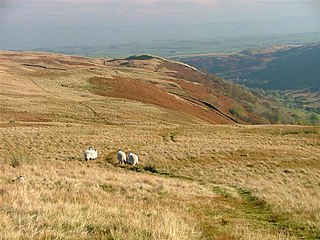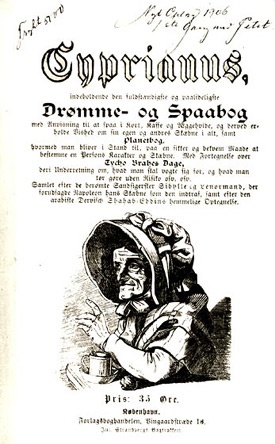In Scandinavian folklore, the mylingar were the phantasmal incarnations of the souls of children that had been forced to roam the earth until they could persuade someone to bury them properly.

The bogeyman is a mythical creature used by adults to frighten children into good behaviour. Bogeymen have no specific appearances and conceptions vary drastically by household and culture, but they are most commonly depicted as masculine or androgynous monsters that punish children for misbehaviour. The bogeyman, and conceptually similar monsters can be found in many cultures around the world. Bogeymen may target a specific act or general misbehaviour, depending on the purpose of invoking the figure, often on the basis of a warning from an authority figure to a child. The term is sometimes used as a non-specific personification of, or metonym for, terror, and sometimes the Devil.

English folklore consists of the myths and legends of England, including the English region's mythical creatures, traditional recipes, urban legends, proverbs, superstitions, and folktales. Its cultural history is rooted in Celtic, Christian, Nordic and Germanic folklore.
In Northern English folklore, the Barghest or Barguest is a mythical monstrous black dog with large teeth and claws, though in other cases the name can refer to a ghost or household elf, especially in Northumberland and Durham, such as the Cauld Lad of Hylton.

Hilda Roderick Ellis Davidson was an English folklorist. She was a scholar at the University of Cambridge and The Folklore Society, and specialized in the study of Celtic and Germanic religion and folklore.

A hellhound is a mythological hound that embodies a guardian or a servant of hell, the devil, or the underworld. Hellhounds occur in mythologies around the world, with the best-known examples being Cerberus from Greek mythology, Garmr from Norse mythology, the black dogs of English folklore, and the fairy hounds of Celtic mythology. Physical characteristics vary, but they are commonly black, anomalously overgrown, supernaturally strong, and often have red eyes or are accompanied by flames.
Builders' rites are ceremonies attendant on the laying of foundation stones, including ecclesiastical, masonic or other traditions connected with foundations or other aspects of construction.

Fossegrim, also known simply as the grim (Norwegian) or Strömkarlen (Swedish), is a water spirit or troll in Scandinavian folklore. Fossegrim plays the fiddle, especially the Hardanger fiddle. Fossegrim has been associated with a mill spirit (kvernknurr) and is related to the water spirit (nokken) and is sometimes also called näcken in Sweden. It is associated with river streams and particularly with cascading streams and mill races.

Brazilian mythology is the subset of Brazilian folklore with cultural elements of diverse origin found in Brazil, comprising folk tales, traditions, characters and beliefs regarding places, people, and entities. The category was originally restricted to indigenous elements, but has been extended to include:

The black dog is a supernatural, spectral, or demonic hellhound originating from English folklore that has also been seen throughout Europe and the Americas. It is usually unnaturally large with glowing red or yellow eyes, is often connected with the Devil, and is sometimes an omen of death. It is sometimes associated with electrical storms, and also with crossroads, barrows, places of execution and ancient pathways.

Folklore of the Low Countries, often just referred to as Dutch folklore, includes the epics, legends, fairy tales and oral traditions of the people of Belgium, Netherlands and Luxembourg. Traditionally this folklore is written or spoken in Dutch or in one of the regional languages of these countries.

Cornish mythology is the folk tradition and mythology of the Cornish people. It consists partly of folk traditions developed in Cornwall and partly of traditions developed by Britons elsewhere before the end of the first millennium, often shared with those of the Breton and Welsh peoples. Some of this contains remnants of the mythology of pre-Christian Britain.

Corpse roads provided a practical means for transporting corpses, often from remote communities, to cemeteries that had burial rights, such as parish churches and chapels of ease. In Britain, such routes can also be known by a number of other names, e.g.: bier road, burial road, coffin line, coffin road, corpse way, funeral road, lych way, lyke way, or procession way. etc. Such "church-ways" have developed a great deal of associated folklore regarding ghosts, spirits, wraiths, etc.

Death is frequently imagined as a personified force. In some mythologies, a character known as the Grim Reaper causes the victim's death by coming to collect that person's soul. Other beliefs hold that the spectre of death is only a psychopomp, a benevolent figure who serves to gently sever the last ties between the soul and the body, and to guide the deceased to the afterlife, without having any control over when or how the victim dies. Death is most often personified in male form, although in certain cultures death is perceived as female. Death is also portrayed as one of the Four Horsemen of the Apocalypse. Most claims of its appearance occur in states of near-death.
In Danish folklore, a helhest is a three-legged horse associated with Hel. Various Danish phrases are recorded that refer to the horse. The Helhest is associated with death and illness, and it is mentioned in folklore as having been spotted in various locations in Denmark.

Cyprianus is a name given in Scandinavian traditions of folk magic to the "black book" ("Svarteboken"): a grimoire or manuscript collection of spells; and by extension to the magical tradition that these spells form a part of. There is no standard text called "Cyprianus"; it was a general label given to a collection of spells.

Canadian folklore is the traditional material that Canadians pass down from generation to generation, either as oral literature or "by custom or practice". It includes songs, legends, jokes, rhymes, proverbs, weather lore, superstitions, and practices such as traditional food-making and craft-making. The largest bodies of folklore in Canada belong to the aboriginal and French-Canadian cultures. English-Canadian folklore and the folklore of recent immigrant groups have added to the country's folk.

Kilgram Bridge is a crossing point across the River Ure in North Yorkshire, England. The bridge, which has six arches, is thought to date back to the 12th century, and it is thought that it is built on the old Roman ford crossing point of the river. Kilgram bridge is traditionally associated as being at the eastern and lower end of Wensleydale and is now a scheduled monument.













